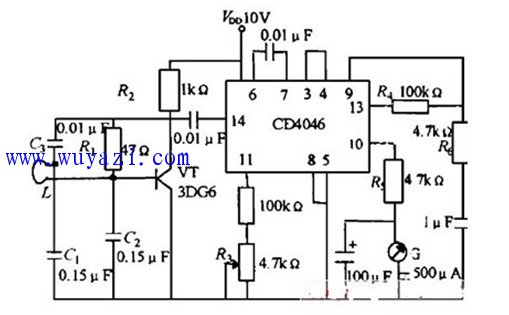Usually the metal detector consists of two parts, a metal detector and an automatic rejection device, wherein the detector is the core part. There are three sets of coils inside the detector, namely the central transmitting coil and two equal receiving coils. The high-frequency variable magnetic field is generated by the oscillator connected to the intermediate transmitting coil. The induced voltage of the receiving coils on both sides in the idle state. The magnetic fields cancel each other before the magnetic field is undisturbed to reach an equilibrium state.
VT and C1, C2, and probe L together form an oscillator with a frequency of approximately 300 kHz. The probe uses a coil with a diameter of 440 mm. When the probe is close to the metal buried in the ground, the metal object is equivalent to the short-circuit ring, so that the inductance of L is reduced, the oscillation frequency is increased, and the deflection angle of the hands is changed. The meter head is easy to use the zero indicator, and the zero point is located in the center of the dial. This circuit still belongs to the frequency voltage conversion circuit.
Once the metal impurities enter the magnetic field, the magnetic field is disturbed, and the balance is broken. The induced voltages of the two receiving coils cannot be cancelled. The un-accelerated induced voltage is amplified by the control system and generates an alarm signal (detecting metal impurities) ). The system can use the alarm signal to drive an automatic reject device or the like to exclude metal impurities from the production line. The following picture shows a circuit diagram of a metal detector consisting of CD4046. 
Silicon Transistor are solid-state semiconductor devices with functions such as detection, rectification, amplification, switching, voltage regulation, and signal modulation. The transistor acts as a variable current switch and can control the output current based on the input voltage. Unlike ordinary mechanical switches (such as Relay and switch), transistors use electrical signals to control their opening and closing, and the switching speed can be very fast. The switching speed in the lab can reach more than 100GHz.
Silicon Transistor, Power Transistor, IGBT Transistor, N-Channel Transistor, PNP Transistor
YANGZHOU POSITIONING TECH CO., LTD. , https://www.cnchipmicro.com